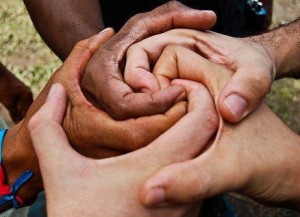 We had the Sunday Introduction to Meditation Class at Yoga Bliss yesterday: two segments of formal sitting meditation and a period of mindful walking. We brought awareness to the six points of posture as we “settled the body into its natural state.” We followed the techniques taught by Alan B. Wallace of shifting awareness to the mental events that arise in the “space of the mind” and, eventually, focused on awareness itself.
We had the Sunday Introduction to Meditation Class at Yoga Bliss yesterday: two segments of formal sitting meditation and a period of mindful walking. We brought awareness to the six points of posture as we “settled the body into its natural state.” We followed the techniques taught by Alan B. Wallace of shifting awareness to the mental events that arise in the “space of the mind” and, eventually, focused on awareness itself.
We discussed what motivates us to meditate and the challenges we encounter in practice. Many of us shared the desire for more calm and equanimity and about the physical challenges of sustaining a seated posture for prolonged periods of time. One of our master yoga teachers, Jonathan Bowra, describes advanced yoga practice as the ability to stay out of struggle. We often push ourselves to conform to an ideal form of a pose – like lotus for example. Many of us are not anatomically adapted to rotating our hips in this way and injure our knees in the process of trying. Why? The manner in which we approach our practice often reflects the way we move through our lives more generally. Do we extend ourselves acceptance, patience, time and tolerance? Do we allow ourselves a process of growth that’s authentic and truly nourishing? This is not to say we avoid challenging sensations. We can recruit our minds and our breathing to build resilience in building strength and flexibility. We come together in class to encourage and support one another to learn and grow.
Meditation is somewhat paradoxical. We interiorize our awareness – it can feel like we are alone while we do it. Yet we are exploring the workings of our mind – a consciousness that is only made possible because we are nested in relationship with others. We learn from each other and in so doing are molding and shaping what neurobiologist, Antonio Damasio, describes as our “autobiographical self.” He says emotions and interactions with others are essential to developing and sustaining this sense of self that makes me, me and you, you.
Meditation can be seen as a way of strengthening the mind’s ability to concentrate and to come to know itself more intimately. Yet eventually that process enables us to realize our inseparability. We talked about how we can incorporate periods of mindfulness in less formal, more spontaneous settings – gazing up at the wing works of amazing swallows in flight for example or watching the sun set on the Sound. There are so many forms of centered awareness – it’s only limited by our imagination and willingness to explore.
We are currently dedicating the donation proceeds from our class to World Vets. This organization of veterinarians is a beautiful example of how we bring our creativity, imagination and skill together to improve the condition of life. Here is an inspiring excerpt from their mission statement:
At the core of World Vets’ values is the belief that all animals deserve kindness and compassion. Although World Vets’ programs often focus on improving the lives of large populations of animals on a global-scale, we never lose sight of how critically important it is to provide a profound level of kindness and excellent care to each individual animal. World Vets also believes strongly in the One Health concept in which the health of animals, people and the environment are inextricably connected to one another and thus we strive to not only help animals but also people and the communities in which they live.
I look forward to hearing more about the creative ways you bring mindfulness alive.
